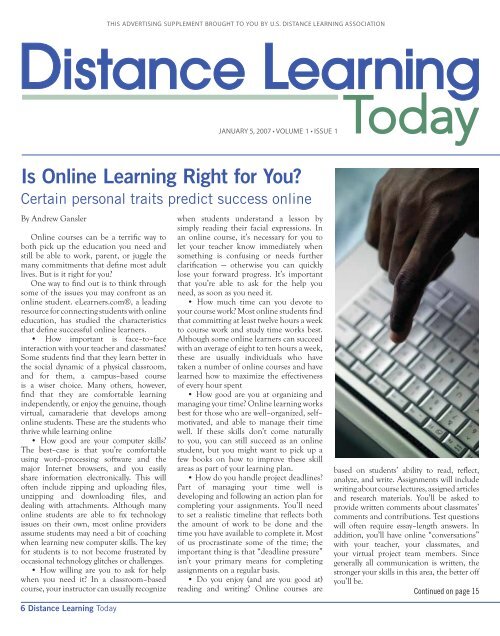Online learning and distance learning both refer to education delivered via the internet, with online learning allowing for more flexibility and convenience for students in choosing their learning environment, while distance learning typically involves studying from the student’s home. Online learning may involve regular in-person interaction between the instructor and students, making it a blended learning technique, whereas distance learning usually lacks in-person interaction.
Despite some similarities, the two methods differ in their approach to the physical learning environment and the level of interaction between students and instructors. Online learning emphasizes convenience and choice of setting, while distance learning focuses on allowing students to study from a distance, often from their home.
These distinctions play a significant role in shaping the learning experience for students in each of these educational modalities.
Key Differences
Discover the key differences between online learning and distance learning. While online learning provides a more interactive experience with regular student-instructor engagement, distance learning lacks in-person interaction, allowing students to study conveniently from their chosen location.
Physical Environment
Online Learning offers a comfortable environment for students, unlike traditional settings.
Flexibility And Convenience
Online Learning allows students to learn at their own pace and in a setting of their choice.

Credit: www.itgovernanceusa.com
Teaching Methods
When comparing online learning and distance learning, it’s important to understand the nuances between the two. Online learning typically involves scheduled virtual classes and direct interaction with instructors, while distance learning offers more flexibility and self-paced study at home. Each method has its own benefits and considerations for learners.
In-person Interaction
In online learning, the in-person interaction with instructors and peers is limited.
However, in distance learning, face-to-face interactions may occur during occasional meet-ups or residential sessions.
This difference impacts the student’s ability to engage in immediate discussions and receive real-time feedback.
Instruction Delivery
In online learning, instruction delivery primarily relies on digital platforms, videos, forums, and virtual classroom sessions.
While in distance learning, materials and instructions are often distributed through mail, teleconferencing, or recorded lectures.
These distinct approaches influence the accessibility and timeliness of learning materials for students.
Location And Attendance
Online learning and distance learning are similar in that they both provide education remotely, but they differ in terms of location. Online learning allows students to access education at their convenience and in their chosen setting, while distance learning typically takes place from the student’s home.
Classroom Setting Vs. Home Setting
One of the key differences between online learning and distance learning is the setting in which students receive their education. In a traditional classroom setting, students gather in a physical location, such as a school or university, where they interact face-to-face with their teachers and peers. This environment provides a structured and focused learning experience, with the presence of a teacher who can instantly address questions and concerns.
On the other hand, online learning allows students to receive their education from the comfort of their own home or any other location of their choosing. This flexible setup gives students the freedom to create their own learning environment, which can be tailored to their individual preferences and needs. Whether it’s a quiet study area or a cozy nook, online learners have the freedom to create a space that enhances their focus and productivity.
In-person Attendance Requirements
When it comes to attendance requirements, online learning and distance learning again differ significantly. In a traditional classroom setting, students are expected to physically attend classes at specified times and locations. This means adhering to a fixed schedule and being present in the classroom, which may involve commuting and strict punctuality.
In contrast, online learning offers a more flexible approach to attendance. With the ability to access course materials and lectures remotely, students have the freedom to choose when and where they engage in their studies. This is especially beneficial for individuals who have other commitments, such as work or family responsibilities, as it allows them to fit their education around their busy schedules.

Credit: www.yumpu.com
Educational Opportunities
Discover the distinction between online learning and distance learning and explore the educational opportunities they bring. Online learning offers flexibility and convenience, allowing students to pursue an education on their own terms, while distance learning allows for remote education from the comfort of home.
Learning Environments
Online learning provides a comfortable environment for students to pursue education at their convenience.
Distance learning allows students to study from home, eliminating the need for a physical classroom.
Access To Resources
- Online learning offers a wide range of digital resources and tools for academic support.
- Distance learning provides access to course materials and lectures remotely, enhancing flexibility.
Educational opportunities in online and distance learning enable individuals to learn effectively in diverse settings and access resources conveniently.
Frequently Asked Questions For Online Learning Vs Distance Learning
Is Distance Learning Another Term For Online Study?
Yes, distance learning is another term for online study. Both terms refer to remote education.
What Is The Difference Between Learning And Online Learning?
The main difference between learning and online learning is the physical environment, with online learning being typically more flexible and convenient for students.
Is E-learning A Distance Education?
Distance education and e-learning differ in location. E-learning can take place in a classroom setting, whereas distance learning is conducted online, often at home.
What Is An Online Learning?
Online learning, also known as distance learning, is a form of education where instruction is delivered to students who are physically separated from the instructor. It allows students to learn at their own pace and convenience, providing flexibility and the ability to choose their preferred learning environment.
How Is Online Learning Different From Distance Learning?
Online learning and distance learning both involve studying remotely, but online learning typically refers to digital classes conducted in real-time, while distance learning can involve pre-recorded lectures and self-paced coursework.
Conclusion
In comparison, both online learning and distance learning offer flexibility and accessibility. However, online learning provides more interactive and engaging experiences. On the other hand, distance learning, while convenient, may lack real-time interaction. Ultimately, the choice depends on individual preferences and learning styles.
Find the best fit for your academic journey!












































Leave a Reply